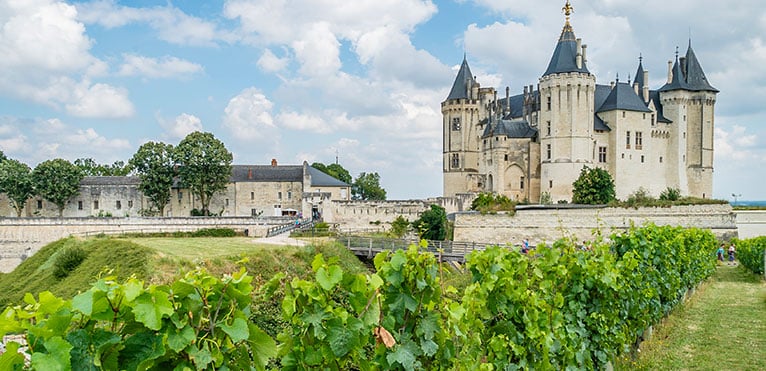
Contents
The Quincy appellation protects dry white wines, made from the Sauvignon Blanc grape variety and produced in a vineyard that extends over the communes of Quincy and Brinay, in the Cher department. The appellation is recognized both in France as an AOC (Appellation d’Origine Contrôlée) and in Europe as an AOP (Appellation d’Origine Protégée).
Quincy, one of the oldest vineyards in the Loire Valley
A legend surrounds the name of the Quincy vineyard, which is said to have belonged to a Roman named Quintius. Nevertheless, the Quincy vineyard, which dates back to antiquity, is one of the oldest in the Loire Valley. The region was occupied by the Bituriges Cubes, who cultivated vines around the town of Quincy. It is said that they brought their know-how to the Bituriges Vivisci people who occupied the Bordeaux region.
In the Middle Ages, the winegrowers of Quincy began to use the Sauvignon grape variety, brought to them by the monks of the Order of Citeaux. Following the phylloxera crisis, the entire vineyard was replanted with Sauvignon Blanc, making it the first in the Loire Valley to be protected by an Appellation d’Origine Contrôlée, in 1936.
The Quincy terroir is particularly well-suited to Sauvignon.
The Quincy vineyards are located in the Cher department, between the communes of Quincy and Brinay, on the left bank of the Cher. Planted on 250 hectares of east-facing plateau, the vineyards benefit from the region’s relatively warm, dry continental climate, with low rainfall compared with the rest of the Loire Valley. These conditions mean that the grapes ripen earlier than in neighboring appellations.
Planted on terraces overlooking the Cher river, the vines grow on sandy and gravelly soils on the surface, with limestone and clay at deeper levels. These soil mixtures also enable Sauvignon to ripen early.
Quincy is renowned for its freshness and minerality
The Quincy appellation concerns wines made from Sauvignon Blanc alone (which may be supplemented by Sauvignon Gris up to a maximum of 10% of the total volume). As a result, this appellation produces only dry white wines.
Quincy wines are recognizable by their pale gold color. The nose reveals fruity wines with citrus notes such as grapefruit, enhanced by the blackcurrant bud aromas typical of the appellation, and mentholated, peppery notes. Fresh and fruity on the palate. Sauvignon here reveals all its aromatic power, which can be expressed in different ways: floral, ripe fruit, honey or spice notes can be recognized depending on the wine. The richness of this aromatic palette can be appreciated over the first 4 to 5 years at most, as these wines, rather than improving with age, are best appreciated in their youth.
A Quincy glass for marine pairings
The freshness of Quincy wines makes for superb classic dry white wine pairings, especially with seafood dishes. These wines can be paired with simply cooked fish such as grilled sole, salmon with sorrel or Loire fish. They can also be served with seafood, fresh or cooked. Mouclade Charentaise, a recipe for mussels prepared with white wine, cream, shallots and saffron, is a perfect match for a Quincy wine, which brings a freshness to this tasty dish.
Quincy estates rich in history
Domaine Jean-Michel Sorbe
This Quincy estate has been run since 1999 by Joseph Mellot, who worked with Jean-Michel Sorbe for over 10 years before taking over the business on his own. Although he has since given the estate a new lease of life, he has kept the name to perpetuate its history. Jean-Michel Sorbe’s vineyard extends over 13.5 hectares, whose geographical location allows production to be divided between two appellations (a few kilometers apart) in the Centre-Loire region: Quincy and Reuilly.
The vineyard’s magnificent terroir, and Joseph Mellot’s respect for it in his work, enable Domaine Jean-Michel Sorbe to produce wines of character, which express the diversity of soils found in the Quincy AOC incredibly well. Joseph Mellot’s viticulture and vinification are part of a sustainable, responsible approach that respects the soil, the terroir and the preservation of biodiversity. In 2019, the estate was awarded the High Environmental Value certificate.
Roux Estate
With the help of his wife, Jean Claude Roux has transformed his family’s small farm in the Centre region of France. He moved on from cereal production and a small sheep farm to a more varied form of agriculture, and in 1994 to viticulture on the Quincy vineyard. The Roux couple met with immediate success, as their very first vintage, 1995, won two silver medals at Mâcon and Blaye. Later, the vineyard expanded to cover 8 hectares of Quincy and 3 hectares of Châteaumeillant.
Although the men in the family are destined to take over the farming business, they have also listened to their thirst for adventure. Thus, Jean Claude had taken over the farm after long travels and numerous jobs in agriculture, and his son, Albin, who has taken over the reins of the estate since 2015, has followed in his footsteps. He spent 7 years in Asia, working in the wine and spirits trade for prestigious Cognac and Armagnac houses, before returning to his roots. Today, his experience has enabled him to open up the field to international markets.